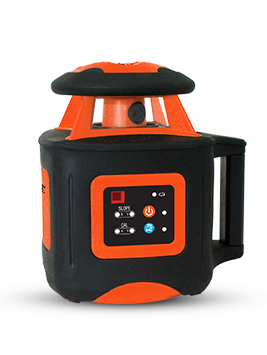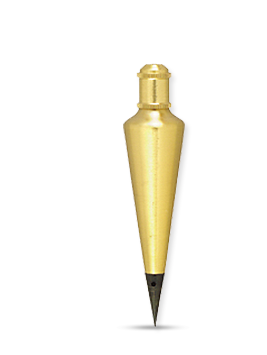Video: Using a Laser Level for Grading a Construction Job Site
Rotary Laser Level Assists in Grading and Leveling Ground
Here, Johnson Level demonstrates using a rotary laser level on a construction jobsite for establishing a grade from either a known point of elevation or the height of the instrument. Finding elevations is important to grading, excavation and building up. Johnson Level's primary outdoor red-beam construction laser level is the 40-6535 electronic self-leveling rotary laser level.
VIDEO SCRIPTHello, my name is Dave Statza, and I'm with Johnson Level & Tool. Today, we're demonstrating the outdoor applications for the 40-6535 electronic self-leveling rotary laser level. This is by far one of our most popular exterior lasers because of the 2,000 foot range this laser has and the accuracy of 1/16" of an inch at 100 feet. Some important accessories to have when you're working outdoors with a laser is a tripod. This is a stand that the tripod [laser] would mount to and this is what anchors itself into the ground [pointing to the tripod's feet]. Also is a grade rod and detector. Not this detector is a receiver sees the laser beam for me outside to help us determine elevations on the job site. Simply turn the laser level on by pushing the power button and the laser will electronically self-level itself. Once it's level, it will start rotating and sending out a signal that I can capture on my detector. Now, on most job sites there's already a known point of elevation that a surveyor has transferred out to the job site. But if there is no known point of elevation on the job site you can establish your own benchmark just by going to the same reference point and establishing what you're height of instrument is. Turn your detector on and move your detector until you receive a signal from the laser. A down signal will tell me that I have to move the laser detector down and an up signal will tell me I have to move the detector up. When the detector is on-grade or level with the laser beam, it gives me a solid tone. Now I know my laser level is setup at 4 foot 4 and 7/8 inches. Now to determine elevations on a job site, I would move to a different location and once again move that laser level detector until I get a signal from the laser beam [adjusts the laser detector]. I now know that my new elevation is 3 feet 4 inches. By knowing the different elevations between my benchmark and my new point, I now know that I am approximately 2 feet higher in this position than I was at my benchmark. Which is important for grading purposes, to make sure the water runs away from the house. So you need to know the different elevations from your benchmark and from your different points on a job site because all job sites have different terralins and different elevations. For whether you're digging a basement, or digging footers, or adding dirt to create slope for water flow away from the house, that's why its important to know what these different elevations are for. |
Shop all rotary laser levels from Johnson Level.
For more on set up, calibration and applications of rotary laser levels, consult our guide on how to use a rotary laser level.
©2010 Johnson Level & Tool Mfg. Co., Inc.

































